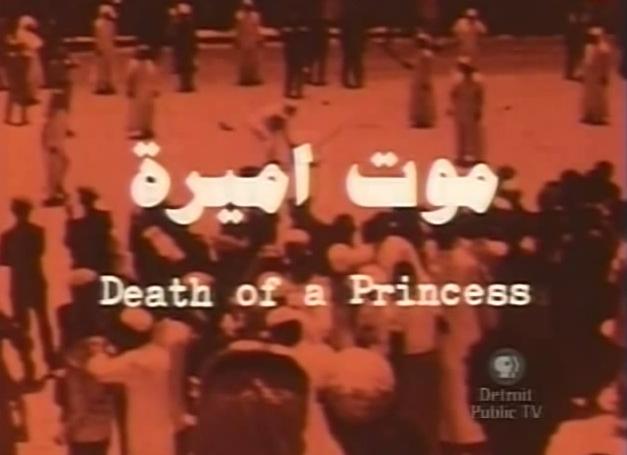Review: Death of a Princess July 2, 2015
Author: Beach Combing | in : Contemporary , trackbackDeath of a Princess, a modest British television documentary, turned out to be the most expensive film ever made. It cost perhaps a billion pounds and this was in 1980 when that kind of money could buy your three or four aircraft carriers. The piece, made for British television, tells the story of a nineteen-year-old Saudi girl, Misha’al who seduces a Saudi teen, has three weeks of, let’s hope, intense carnal relations and who was then shot in a carpark in an ad hoc execution, moments before the boy was dispatched with a sword (in what seems to have been a deliberately botched beheading). So why should a film which was made in 1980, with production values that were very much late 1970s, and a soundtrack from Vangelis, have cost so much? Well, it cost so much for the very simple reason that it led to one of the biggest diplomatic spats since the Second World War. The Saudi government had an epileptic hissy fit expelled the British ambassador and ‘took measures’. When the documentary arrived in the United States the Saudis bullied Mobil into running ads against the screening, on PBS, of the film and so it went on in Australia, the Netherlands… Of course, the Saudi stance just added to the documentary’s notoriety and ultimately to its success.
Beach knew all this but he had never, until this morning, seen the documentary itself. ‘Documentary’ is an interesting word for Death of a Princess. The film is actually a docu-drama describing the attempt of a British journalist (Antony Thomas) to discover the facts behind the death of Misha’al in 1978. He first hears about Misha’al’s execution at a dinner party, then, follows a long trail through the labyrinth of mirrors that is the Arab world, talking to anyone who has a view. In it he learns that there are many different versions of the events he is trying to uncover: conspiracy breeds on secrecy and Saudi society is the most opaque imaginable. At last, when a young Saudi woman asks him: ‘Have you heard the true story?’, he replies ‘I’ve heard a dozen true stories’. The film is dated, and the 1970s, are not yet interesting enough, to give that lovely black and white distance of a Casablanca or Third Man. But the viewer is still dragged in by the search for facts. Was Misha’al a brave young woman pushing the edges of patriarchal society or was she, in the words of the most authoritative witness, a ‘poor silly girl’? In the end the facts remain elusive and the horrible details of her death become a spider’s web in which the changing, ambitious and yet deeply insecure Islamic world of 1980 is caught. As often happens with controversial art objects – e.g. Satanic Verses – the luke-warm defend freedom of speech only to admit that the work in question is ‘vile’ or ‘muddled’. There are lots of comments to this effect about Death: don’t believe them. Five star stuff. If you have an hour the documentary is split into seven parts on youtube: rather surprised it is there at all…
And remember, don’t ask for this in the video rentals shop in Riyadah
Beach is always looking for great documentaries: drbeachcombing AT yahoo DOT com



